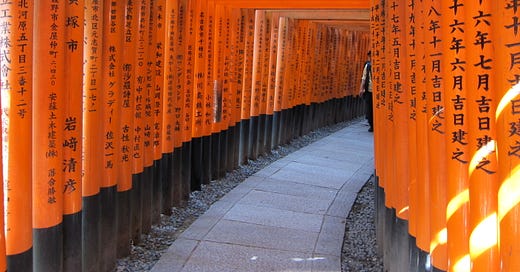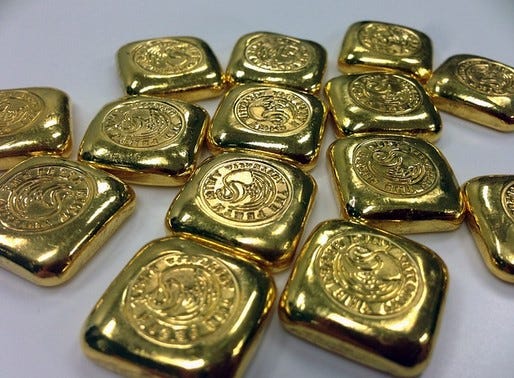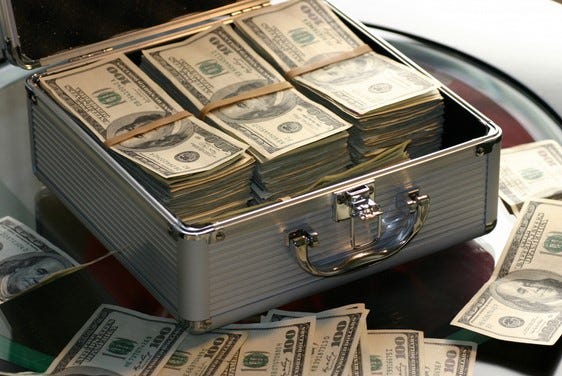BOOM Finance and Economics 23rd July 2023
WEEKLY REVIEW -- Sunday -- All previous Editorials are available at LinkedIn and at https://boomfinanceandeconomics.wordpress.com/
This week in BOOM ……….
NO RETURN TO GOLD BACKED CURRENCIES
BRICS BANK AND A “GOLD BACKED CURRENCY”
RUSSIAN EXPORTS, THE US DOLLAR, THE IMF,
BOOM’S QUANTITATIVE BOOSTING – NO NEED FOR CBDC’s
USING SPECIAL DRAWING RIGHTS TO BOOST GLOBAL MONEY SUPPLY
SPECIAL DRAWING RIGHTS AND QUANTITATIVE BOOSTING
PHYSICAL CASH AN ESSENTIAL TOOL OF MONETARY POLICY
BOOM’s QUANTITATIVE BOOSTING EXPLAINED
BOOM’s PERFECT ECONOMY
NO RETURN TO GOLD BACKED CURRENCIES
Gold backed currencies are a failed experiment. The United Kingdom abandoned the concept as “backing” for the Pound Sterling way back in 1931 when the Pound was the global reserve currency. The United States waited 40 more years until 1971 but then abandoned the concept. The US currency took the role of new global reserve currency from the Pound at the Bretton Woods Meeting in New Hampshire in July 1944.
Why did the UK and the US abandon Gold? They did this because their money supply was artificially constrained by the volume of gold metal ingots sitting in vaults. The only way to expand their money supply as the economic demand expanded was to repeatedly revalue it. And that required a committee of very clever, wise economists to be appointed. Both governments decided that such a committee could not be found.
Any currency “backed” by Gold (or any other commodity) requires that huge economic resources must be put to work in finding the “precious” commodity (or stealing it). Then more huge economic resources must be used to dig it up, refine it and transport it to an underground bank vault where it must be kept safe by (presumably) a very powerful military force. Then a very wise and very clever committee of unelected, appointed economists must decide its price in the designated currency. BOOM has yet to find such a committee. Wise and clever economists are not easy to come by. And, with 193 nations in existence, 193 wise, clever committees would have to be found if there was no generally accepted, global “reserve currency”.
The whole concept is economically and financially ridiculous on a first principles basis. Currencies are best be backed by (1) general acceptance (2) shared trust and (3) contractual agreements in a region where an intact political and judicial system of governance is well established. It is a complex mix but, nonetheless, one that can be understood by even the most ill educated amongst us.
BRICS BANK AND A “GOLD BACKED CURRENCY”
There have been hysterical reports recently on some financial websites and on social media (in particular) that the BRICS Bank is “about to launch” a “new trading currency backed by Gold”. These claims were false, emanating from a poorly constructed statement made in Africa by a foolish bureaucrat. That foolish statement was duly reported unwisely and promoted by the Russian media outlet, RT.com.
RT describes itself as “an autonomous, non-profit organisation that is publicly financed from the budget of the Russian Federation.”
The whole saga was a fiasco that was spread like wildfire by RT. BOOM expects the Russian government to discipline RT management over such poor reporting. If that does not happen, then readers can assume that the story was deliberately spread as part of a deliberate disinformation campaign. Any reputation that RT has developed as a news source will then become mud.
So, what really happened?
On 5th July, the BRICS Bank – officially called the New Development Bank -- made a statement announcing that they had no intention of launching any new currency. And specifically, no intention of launching any new currency “backed by Gold”.
In fact, the Chief Financial Officer of the New Development Bank, Leslie Maasdorp, stated categorically “There is no suggestion right now to create a BRICS currency.” He went on to say that the bank’s chief strategy was currently “the greater use of our own national currencies” in settlements of international trade and in the denomination of bonds issued by member nations.
The New Development Bank has the following nations as founding members – Brazil, Russia, India, China, South Africa (the BRICS) plus new entrants, the United Arab Emirates, Egypt and Bangladesh. Uruguay is in the final stages of its application to join and other nations are interested including Saudi Arabia. Currently, it is a rather small institution serving emerging market economies with US$ 50 Billion of subscribed capital and with only $ 10 Billion of equity.
Before readers get too excited, it is important to understand that Leslie Maasdorp is an ex Bank of America, Barclays and Goldman Sachs banker. He is also tainted by his association with the unelected and non-representative World Economic Forum (WEF) as a Young Global Leader. So, unfortunately, the shadow (and influence) of Klaus Schwab and the self-appointed Davos Billionaires falls ominously over the New Development BRICS Bank.
The New Development Bank uses the US Dollar as its anchor currency and publishes its accounts denominated in US Dollars. Established in 2015 by the BRICS countries, the New Development Bank defines itself as “a multilateral development bank aimed at mobilising resources for infrastructure and sustainable development projects in BRICS and other EMDCs” (Emerging Market Developing Countries).
Their policies are stated clearly. The NDB “supports infrastructure and sustainable development projects in alignment with the development objectives of our members and their commitments under the SDGs (“Sustainable Development Goals”) and the Paris Agreement. We prioritise high-impact operations that are climate-smart, disaster-resilient, technology-integrated and socially-inclusive.”
Sadly, that statement could have easily been written by Klaus Schwab or any of his acolytes at the WEF. the unelected Globalists who meet in Davos or by any unelected official at the United Nations. It’s wokeness is possibly surprising to anyone who thinks the BRICS Bank may represent some revolution in money supply.
RUSSIAN EXPORTS, THE US DOLLAR, THE IMF, BOOM’S QUANTITATIVE BOOSTING – NO NEED FOR CBDC’s
Russian exports of grain have hit a record high, despite the Ukraine war and sanctions initiated by the United States. Destinations for the grain include China, Türkiye, Egypt, Bangladesh, Algeria, Pakistan, Iran, Libya, Saudi Arabia, Israel and Mexico. Russia’s wheat exports now amount to 20 % of the world’s total with Egypt now the biggest customer. Turkiye, Algeria, Iran and Saudi Arabia are the next largest importers. And a report last week showed that Austria is continuing to buy large amounts of Russian gas under a long term contract that runs through to 2040. Hungary and Slovakia are also dependent upon Russian gas. Russia’s energy exports are going gang busters, especially to India and China.
However, the Russian Central Bank shows that Russian exports in US Dollar total have declined by around 25 % in 2023. Sounds bad, doesn’t it? Think again, this is not a simple matter.
Many observers will conclude that such a decline in exports from Russia (measured in US Dollar equivalents) has harmed the Russian economy. However, that analysis is misleading. Such a decline will lower the total GDP in an economy but only if that GDP is measured in US Dollars. There may be no decline in GDP as measured in Rubles. In fact, that measure of GDP could rise significantly and overall production of goods and services could rise with the economy performing well and with low levels of unemployment. In fact, Russia’s unemployment rate has been falling steadily for the last 12 months to 3.2 % recorded in May which is a record low.
The other rationale for exporting goods and services is to acquire foreign currencies, especially US Dollars. Nations seek US Dollars to use as settlement for most of their imports and to repay US Dollar denominated loans. US Dollars are used because they dominate in availability and convenience globally. This is where the matter becomes even more intriguing. Why? Because Russia has set course to a new paradigm where all currencies will become more freely available and accepted as settlement for trade rather than using the US Dollar as the generally accepted and dominant currency of settlement.
In such a world, trade can continue to flow and grow and be settled with other currencies while the US Dollar value of the trade becomes slowly irrelevant. A future such as that is very different to the past. In fact, a growing Non US Dollar Trade world could slowly emerge as each year passes and then economic comparisons traditionally made by using the US Dollar as the measurement tool will become meaningless. Such comparisons will then have to be made on actual volumes of goods exchanged or, alternatively and more logically, using a basket of currencies rendered to a single number by an algorithm. The SDR is a similar device and could be used in future to make economic comparisons. However, there is more to consider when looking at the SDR concept.
USING SPECIAL DRAWING RIGHTS TO BOOST GLOBAL MONEY SUPPLY
Special Drawing Rights (SDR). An SDR is essentially an artificial accounting instrument, derived from 5 major national currencies by agreement. It is used for accounting purposes and created in 1969 by the IMF (International Monetary Fund). It is not a currency itself. It is built from a basket of national currencies and it was created in response to concerns about the limitations of gold and US Dollars as the sole means of settling international accounts.
The SDR is (currently) made up of the US Dollar, the Euro, the Chinese Yuan, the Japanese Yen and the Pound Sterling. The formula for calculating the SDR is re-considered every 5 years. In March 2021, the IMF re-set the formula to the following weightings --
US Dollar -- 43.38 %
Euro – 29.31 %
Chinese Yuan – 12.28 %
Japanese Yen – 7.59 %
British Pound Sterling – 7.44 %
So, the SDR is a unit of value and could theoretically be used to make comparisons between economies in future instead of using the US Dollar as the measuring stick. But there is much more to know about the SDR concept.
The IMF can “allocate” SDR’s to member nations. This is equivalent to an issuance of a currency (although the SDR itself is not a currency). There have been 4 allocations since 1969 with the largest and most recent one being in 2021 when the amount “allocated” was SDR 456 Billion, equivalent to US$ 650 Billion (at the time). The aim was to increase global liquidity. The IMF distributes a general allocation to member countries in proportion to their quota shares at the IMF. That 2022 allocation was the first one for many member nations. In fact, 20% of members had never received an allocation previously. Such allocations are essentially a monetary gift from the IMF and have the effect of boosting overall global liquidity – the global money supply.
In this respect, by using the SDR device, the IMF is effectively acting as a defacto global central bank and the member nations can be seen as defacto client commercial banks.
However, SDR’s themselves cannot be used in the real economies of those nations. Why? Because individuals and private entities (such as companies) cannot hold SDR’s. Thus, SDR’s are effectively defacto banking reserves created at a global level.
SPECIAL DRAWING RIGHTS AND QUANTITATIVE BOOSTING
Boosting the allocations of SDRs to member nations in this fashion is very similar to BOOM’s concept of Quantitative Boosting (QB) for national economies. Both are ways of instantly boosting overall liquidity (volume of money) in the financial sector through mutual agreements between banks and governments.
If QB was to occur, governments would fund their deficits by agreeing to apply for bank loans from their central bank rather than by issuing bonds (securities) to the investment community. This would instantly boost the supply of fresh new money into the real economy as that is where the government expends the resultant funds. Under QB, the central bank would borrow the funds from their commercial bank members, thus creating new assets on the balance sheets of the commercial banks. An equivalent asset (loan) would appear on the balance sheet of the central bank, balanced by an equal liability on the government’s balance sheet (at the Treasury). This would allow the central bank and the government to increase the volume of funds in circulation in the economy with essentially no time lags. And, importantly, without any increase in interest rate settings -- which could be kept in reserve as a means of CPI inflation control.
The monetary volume circle would be completed by the funds immediately appearing as customer deposits on the balance sheets of the commercial banking system. Those deposits – a liability to the banks --- would be equivalent in value to the loan applied for by the government to the central bank. And they would also be equivalent in value to the new asset created on the balance sheets of the commercial banking sector representing the loans to the central bank. All trial balances across the banking sector and in the real economy would settle almost immediately. Hey presto, in such a system, dangerous CPI (or asset) deflation or dis-inflation could be moderated without any decrease in interest rates.
In such a system, there is also no need for any new fan-dangled “CBDC” (Central Bank Digital Currency) to boost liquidity.
QB would give governments and central banks an extra tool of monetary policy, one based upon the volume of the money supply rather than the cost (interest rate settings).
If and when a government paid back its QB loan from taxation revenues, it will effectively reduce the volume of money supply. This then becomes a methodology for fighting dangerous CPI (or asset) inflation. This could be done also in agreement with the central bank and the commercial banking sector.
Prudence and cooperation are also needed to institute such a money supply control system. By the way, China is effectively already running a QB system. They do not rely so much on bond issuance, preferring to use bank loans as their prime finance mechanism. Currently, total Bank Loans in China amount to approximately US $ 32 Trillion while the total Bank Loans in the United States amount to approximately US$ 10 Trillion. This is one very important reason why China’s economy continues to outgrow America’s economy year on year.
PHYSICAL CASH AN ESSENTIAL TOOL OF MONETARY POLICY
As QB agreements are put in place, a buffer of increased physical Cash, issued by the Government Treasury and distributed by the banking sector would also assist greatly in maintaining monetary stability. Physical Cash volume is an important third tool of monetary policy that must be employed as a buffer against excessive creation of credit money (money created as a commercial bank loan to a willing borrower).
BOOM’s QUANTITATIVE BOOSTING EXPLAINED
QB Explained: https://boomfinanceandeconomics.wordpress.com/2019/12/15/boom-as-at-15th-december-2019/
And BOOM’s Perfect Economy: https://boomfinanceandeconomics.wordpress.com/2020/01/18/boom-as-at-19th-january-2020/
In economics, things work until they don’t. Until next week, make your own conclusions, do your own research. BOOM does not offer investment advice.
BOOM — ALL PREVIOUS EDITORIALS AVAILABLE AT —
https://boomfinanceandeconomics.wordpress.com/
Disclaimer: All content is presented for educational and/or entertainment purposes only. Under no circumstances should it be mistaken for professional investment advice, nor is it at all intended to be taken as such. The commentary and other contents simply reflect the opinion of the authors alone on the current and future status of the markets and various economies. It is subject to error and change without notice. The presence of a link to a website does not indicate approval or endorsement of that web site or any services, products, or opinions that may be offered by them.
Neither the information nor any opinion expressed constitutes a solicitation to buy or sell any securities nor investments. Do NOT ever purchase any security or investment without doing your own and sufficient research. Neither BOOM Finance and Economics.com nor any of its principals or contributors are under any obligation to update or keep current the information contained herein. The principals and related parties may at times have positions in the securities or investments referred to and may make purchases or sales of these securities and investments while this site is live. The analysis contained is based on both technical and fundamental research.
Although the information contained is derived from sources which are believed to be reliable, they cannot be guaranteed.
Disclosure: We accept no advertising or compensation, and have no material connection to any products, brands, topics or companies mentioned anywhere on the site.
Fair Use Notice: This site contains copyrighted material the use of which has not always been specifically authorized by the copyright owner. We are making such material available in our efforts to advance understanding of issues of economic and social significance. We believe this constitutes a ‘fair use’ of any such copyrighted material as provided for in section 107 of the US Copyright Law. In accordance with Title 17 U.S.C. Section 107, the material on this site is distributed without profit. If you wish to use copyrighted material from this site for purposes of your own that go beyond ‘fair use’, you must obtain permission from the copyright owner.
Subscribe to BOOM Finance and Economics Substack
By Dr Gerry
BOOM has developed a loyal readership over 5 years on other platforms which includes many of the world’s most senior economists, central bankers, fund managers and academics.






